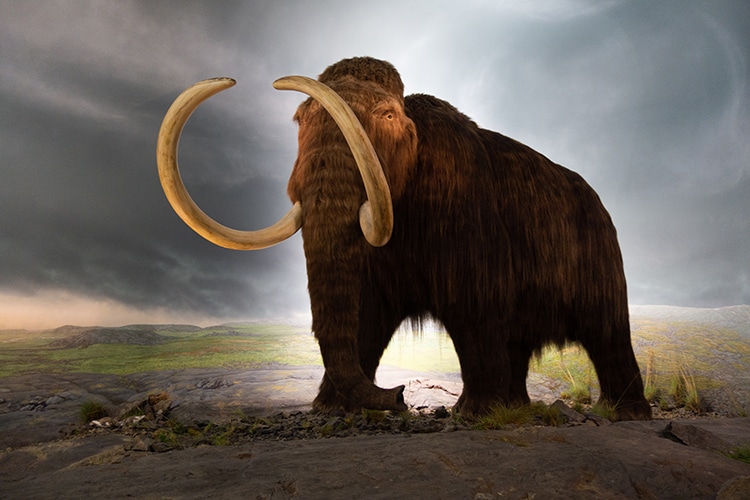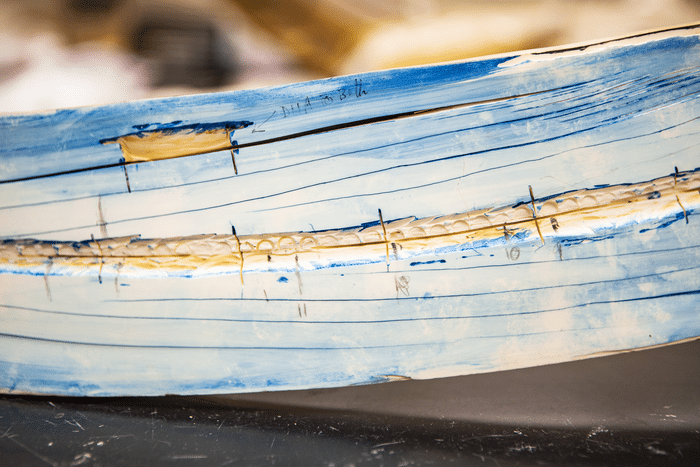A woolly mammoth model at the Royal Victoria Museum, Victoria, British Columbia, Canada.
Researchers from the University of Alaska Fairbanks tested the composition of a 17,000-year-old tusk.
The ancient fossilized tusk was held at the University of Alaska Museum of the North.

A woolly mammoth model at the Royal Victoria Museum, Victoria, British Columbia, Canada. (Photo:Wikimedia Coomons,CC BY 2.0)
Unlike trees, however, mammoths and other mammals roamed.
As the mammoth grazed in new areas, it imbibed stable isotopes of strontium and oxygen.
These isotopes vary by region depending on geology, weather, and other factors.

A tusk sample stained to examine the stages of growth. (Photo:JR Ancheta, University of Alaska Fairbanks)
The team took 400,000 microscopic data pointsusing a laser and other techniques.
Small mammals had smaller ranges and were more likely to present a local signature.
On this map of isotopic signatures across Alaska, the team traced the mammoth’s movements.
They discovered the 17,000-year-old mammoththe last breed of mammoth in Alaskamigrated frequently.
However, the creature traveled enough miles to have circumnavigated the globe twice during its 28-year life.
Some blips in the tusk analysis suggest events in the life of the young male.
At around age 15, his diet clearly changed.
In the last year of his life, nitrogen is prominent.
This suggests the mammoth was likely in the process of dying of starvation.
A tusk sample stained to examine the stages of growth.